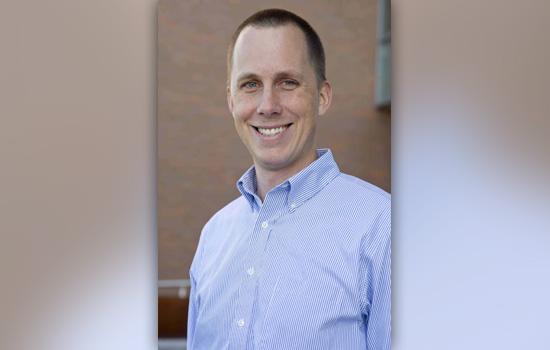Thomas Gaborski named 2014 Young Innovator
Innovative research by RIT professor in use of adipose stem cells and ultra-thin, nano-membranes points to improvements in tissue engineering
A. Sue Weisler
Thomas Gaborski
Thomas Gaborski’s research may be in ultra-thin nano-membranes, but it’s going to be titanic in advancing tissue engineering.
Gaborski, assistant professor of biomedical engineering at Rochester Institute of Technology, and his research team are developing ways to use ultra-thin nano-membranes and adipose stem cells to create the vascular network necessary in engineering tissue, skin and organs.
For these organs to be viable, there is a need for not only the organ structure but also the inner network of micro-vessels and capillaries. Gaborski is helping develop that complex structure, using transparent and permeable membrane “scaffolds” to support cell and tissue growth, essential to tissue engineering.
Using adipose-derived stem cells that come from fat tissue, acquired from adults rather than embryos, Gaborski has been able to create functional microenvironments that help support and differentiate stem cells into the specialized cells that make up the human body. Creating engineered tissues from stem cells can help to address the critical shortage of donor organs. It also may alleviate some aspects of organ rejection by an individual’s immune system because of the likelihood that an individual’s own stem cells could generate needed tissue.
For his work with thin membranes and cell culture on membranes, Gaborski received the 2014 Young Innovator Award in Cellular and Molecular Bioengineering given by the Biomedical Engineering Society this fall. The award is given to profile the best research being carried out by talented assistant professors working in the growing bioengineering field. He presented results of his work in porous membranes and the ability to control cell functions at the society’s annual meeting, Oct. 22-25 in San Antonio, Texas.
The goal of tissue engineering is to repair or replace tissues and organs damaged as a result of injury or disease. This requires the precise use of many types of cells, support scaffolds and biochemical factors to create replacement tissue. It is important to design these structures with the proper mechanical and physiological requirements, said Gaborski, a faculty member in RIT’s Kate Gleason College of Engineering.
Today, researchers can develop two-dimensional tissues such as artificial skin that is thin enough to receive needed oxygen and nutrients. However, most organs are three-dimensional, he explained.
“While it is possible in the lab to make very thin slices of tissue-mimics, once you create a three-dimensional tissue you need to create the blood vessel network, essentially the ‘highway system.’ The work that we are doing here is differentiating the adipose stem cells into the cells that make up blood vessels.”
Gaborski found that porous membranes could be used to help promote endothelial differentiation of adipose-derived stem cells and to investigate perivascular interactions. Growing the adipose stem cells on one side of a thin, porous nano-membrane and culturing them, the team found that the cells differentiated into endothelial cells even when grown on this lab-produced membrane, and that they acted more like perivascular cells—those that help blood vessels form and stabilize.
“We hope to create the tools and methodologies that will enable future tissue engineers to create blood vessels from anyone’s own fat tissue,” said Gaborski, who is also part of the Nanomembrane Research Group, a collaborative team from RIT, the University of Rochester and local nanotechnology company SiMPore. The Nanomembrane Research Group is made up of faculty, students, scientists and engineers working to develop ultrathin silicon membrane technologies. The group focuses on use of novel porous nanomaterials because of their permeability and ability to be scaled-up for varied biological and non-biological devices and structures.
“We believe this sort of toolbox could be used by others to create vascular cells for 3D-printed tissues,” Gaborski added. “There has been a lot of discussion about 3D-printed organs and tissues. We are not looking to generate organs here at RIT, but what we are looking to do is generate protocols and the tools necessary to differentiate your cells, or my cells, into blood vessels that would be used in 3D-printed organs of the future.”











